We’re constantly arguing whether women can or can’t have it all when it comes to their career and their family. For women in creative professions, the demands of raising children while working unpredictable hours with little financial security can leave many asking themselves whether pursuing a creative career is worth it.
In her second year of university, Sadie Catt, a photography student at UWE Bristol, began to ask that same question. Knowing she wanted to be a mother in the future, she couldn’t fathom managing the logistics of being a photographer while maintaining a stable home life. She even considered giving up a career in photography to pursue a safer option.
Searching for an answer to her questions, she reached out to fellow photographers who were mothers. She began taking photographs of photographers in her network, first separately and then with their children. Accompanying the photos were mini-essays that arose from conversations between Sadie and her subjects about motherhood.
Sadie’s personal project evolved into a platform for female photographers to reflect on their experiences working in a creative career and having children. She now hopes it will spark further discussion on the subject from both women and men.
We talked to Sadie about the project and the conversations we need to be having about balancing work and motherhood.
Why ‘motherhood and photography’?
In the second year of my degree, I began to really worry about pursuing a career as a photographer. I began to contemplate the logistics of the job, as I knew I also wanted to become a mother in the future. I became concerned with the idea of working long, unstructured hours and having no financial security. I just couldn’t see how I’d be able to comfortably balance all this, as well as manage a stable home life and remain present as a mother. It got to the point where I was debating whether I would have to choose one over the other and give up photography for a safer option.
I asked the women to look into the lens of the camera in order to create a conversation between the subject and the viewer
To try and make sense of all this, I began to reach out to women who were already doing all the things that were scaring me. My aim at the beginning was to simply open up the topic of women having to consider the issues of motherhood when it came to choosing a career path and to hopefully gain some insight for myself.
But as the project developed I realised that the conversations I was having were so important that they needed to be shared. They are important not only for people like me, a young woman just beginning a career in the arts but also for the women I was having these conversations with. For them to reflect on what they were achieving in doing both. Ultimately, I wanted to offer a platform for this topic to be heard not only by other working mothers but everyone, male and female.
How did you go about selecting your subjects?
I didn’t have any specifics about the type of photography my subjects worked in, or how old their children might be. As long as they were mothers and professional photographers I was happy.
Did you talk to your subjects about their experiences before you shot them? Did this influence the outcome of the shoot?
Before the first shoot for this project, I developed a format in which I knew I wanted all the shoots to go by. As this was my first editorial approach to this type of series, all shot on film, I wanted to give myself the best chance to come out of each shoot with images I knew would work together. I would only shoot two rolls of film per subject. One of just the mother and the other of the mother and children together.
I didn’t want to restrict each of the women I was meeting to one definitive box
But, before any of this, I would ask to sit down with my subject and talk about their experiences balancing motherhood and photography, which I’d record and make a transcript of later. This meant we had a chance to get to know each other over a cup of tea as I hadn't previously met any of the women I shot for this project before. It also gave the kids some time to get used to me before I asked them all to sit in front of the camera.
Talking to my subjects before photographing them had a big influence on the work. It meant we were all that bit more relaxed around each other. I was able to gauge more about them as individuals and the relationships between them as well as understand more about their opinions on the topic.
What did you ultimately want to capture in your photographs?
I wanted to depict both sides to my subjects, as industry women and then as mothers. I always aim for a degree of intimacy in portraits, which can often appear quite vulnerable. I think this along with the use of natural light ultimately contributes to a particularly honest image. I asked the women to look into the lens of the camera in order to create a conversation between the subject and the viewer, and give them the opportunity to acknowledge and respond to the topic.
I would like to think that the gender of a subject would not impact on the images, nor the importance of the concept.
Why did you choose to photograph your subjects in their homes?
Lots of different things contributed to my decisions on location. But, I always knew the photos had to be taken at the subject’s home. I never considered anywhere else. I wanted each woman’s individuality to come through in the portraits I was making and I think a lot can be said about someone by the environment they live in.
It was not just me worried about this issue and it is actually a big concern for a lot of women, particularly in creative industries.
I have also come to believe that the easiest way to make relaxed and intimate images of people is to do so in their own homes; where they are most comfortable and at ease. To a degree, it was me as the photographer going out of my comfort zone to make this project.
I also felt that considering the context these images were being made in, and the concept behind it, that capturing each subject’s home-life and the ‘nest’ they raise their children in would be the most appropriate location for me to take the photos. Of course, some of it also came down to logic. It was easiest for me to work with each family and join them in their home at a time that was best for them.
I was struck by this quote from one of your subjects,
‘...there’s also the danger of talking about motherhood too much; then you’re seen as a mum and not a photographer, a mum first rather than a photographer first.’
Were you conscious of this during the project?
This struck me too. I guess as I am not a mother myself I hadn’t quite considered that the change in a woman’s identity when they have a child could result in being pre-conceived as a mother before a photographer or a professional.
Talking to Kirsty Mackay opened my eyes more to this. It made me more aware of how my work might affect opinions or create a stereotype. I didn’t want to restrict each of the women I was meeting to one definitive box. This definitely influenced decisions I was making around things such as the project's title.
It took me getting so frustrated that I had to just take action and seek out answers to my questions, along with validation for my concerns, to feel a bit more secure.
If you were to do a similar series on fatherhood and photography in what ways might it differ from your motherhood series?
I think it would be really interesting to get a male perspective on the effects of parenthood. Not only on a photographer’s creativity as an artist but their professional lives also. I have really enjoyed seeing depictions of fatherhood through recent work such as Vincent Ferrané’s Milky Way and Colin Pantall’s All Quiet on the Home Front.
But in terms of my own project, I wonder if I might struggle to make such intimate connections with professional men from an older generation. I personally relate less to fatherhood than I do to motherhood. But saying that, I would like to think that the gender of a subject would not impact on the images, nor the importance of the concept.
I know I can be guilty of romanticising it slightly in my head and of course, I have never actually experienced being a mother myself.
What did you learn from the project?
I learnt a huge amount through making this series. Not only did I gain some really valuable and reassuring insight into what my future might look like one day, I also learnt that it was not just me worried about this issue. It is actually a big concern for a lot of women, particularly in creative industries.
It’s an issue that just hadn’t ever been addressed around me. It took me getting so frustrated that I had to just take action and seek out answers to my questions, along with validation for my concerns, to feel a bit more secure. And I think that’s what gives value to the work. I want it to prompt more of this sort of conversation which would mean that other young women starting these types of careers don’t go in quite so blind and full of fear as I did.
Through this project, I got to see examples of a broad range of circumstances in which women are successfully managing their careers in photography and their roles as mothers. I want this to empower both the subject and the viewer. This taught me a lot about my own practice in photography and forced me to face a few fears along the way. It’s a project I really enjoyed making and will be something I continue for many years to come.
You’ve taken a series of photographs of your own mother, can you describe your relationship?
I did a lot of work focused on my mum a few years ago. She was very unwell and not herself for a long time as the result of a debilitating depression. The photography really helped me through it and I’m happy to say she has recovered and we are probably a lot closer now for it.
My mother is a very outspoken, knowledgeable, amazing woman. I’m sure she is a lot of the reason for my interest in maternity, she definitely inspires me.
My mother, the person she is and her own life experiences have shaped me significantly and therefore the work I make too.
What was it like photographing your own mother?
Looking back I can now see what an intense act it was when I was photographing her while she was that unwell. I wanted to make an example of just how intimate and stripped back our relationship had to be to get her through [her depression], as our roles as parent and child were almost completely reversed.
At the time we were both so preoccupied I think taking pictures didn’t really seem that scary or important compared to other things we were facing. But now I can see how significant and cathartic it really was. I sometimes question the ethics of photographing her while she was so unhappy and can still feel quite guilty about it.
But I know she was just happy I was doing something proactive to help myself, and if being the subject of my creativity was that then she would do it. I also know I was doing the right thing in not attempting to cover up or hide how hard things were. We should be honest when it comes to mental health, however uncomfortable it may be.
Has your mother influenced your photography in any way?
Definitely, as I said my mum is pretty outspoken and she has always encouraged me to express myself. Particularly in terms of my emotions and mental health or feminist opinions, two themes which are prominent throughout a lot of my work.
All of my family are very supportive and encouraging of my practice in photography. But, my relationship with my mother, the person she is and her own life experiences have shaped me significantly and therefore the work I make too.
We can all relate to knowing or experiencing motherly guidance or care from someone, whatever sex, race or age we are.
What does motherhood mean to you?
It seems that whatever focus or approach I take in my work, it can always be related back to motherhood or maternal ties. But I think I’ve still got a lot to learn about motherhood. I know I can be guilty of romanticising it slightly in my head and of course, I have never actually experienced being a mother myself.
What I do know though is that motherhood is in whatever circumstance, unconditional and everywhere. We can all relate to knowing or experiencing motherly guidance or care from someone, whatever sex, race or age we are. And I think that is why I find it such a widely relatable and powerful subject.
Words | Naomi Southwell & Sadie Catt
Images | Sadie Catt



No comments.